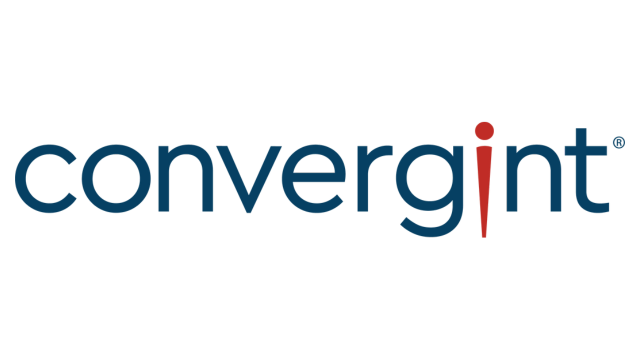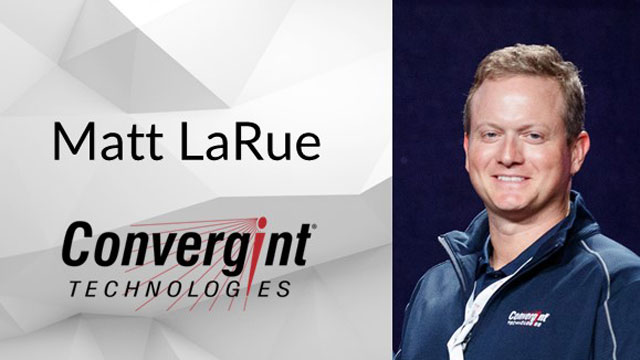Convergint Technologies has built a strong expertise within the utilities vertical market. Utilities-specific solutions provided by Convergint include integrated security, fire, and life safety systems designed to protect assets and mitigate risk.
When it comes to integrated security solutions for the utilities vertical, there are few people with a better understanding of this market than Convergint’s Matt LaRue. Here Matt shares some of his thoughts on emerging trends and provides real-world insights for security professionals in the utilities industry who are looking for answers on how to solve their most pressing challenges.
Tell us about your professional background.
I have been working in the security industry for 17 years as an installer, a programmer, and account manager, and I currently specialize in connecting people within the utilities vertical. I have been working with utilities for the past seven years and enjoy the ever-changing technologies, policies, and guidelines.
What is your role at Convergint?
I currently manage a large, multi-tiered utilities client that operates in the Midwest, far South, and along the East Coast. I also am working with other utility partners and am pursuing projects and customer relationships throughout the United States.
What are some examples of utilities customers?
Utilities customers include public utilities, local co-op utilities, and large companies that offer a variety of energy solutions, from transmission to distribution, power generation, nuclear, and localized commercial office space environments. Most of the work performed is done within substations, which are very dangerous environments and require strict safety and compliance policies.
What do you think are some of the biggest challenges faced by the utilities vertical as it relates to security?
One of the biggest challenges is compliance with NERC / CIP 014. Detailing those plans to the government is an ongoing challenge for utilities. Selecting a specific manufacturer to handle the primary alarms, and being able to monitor and report data using the alarms from various manufacturers, may also pose a challenge to utilities companies who may have multiple disparate systems currently in place. Integrating those disparate systems to a common platform, organizing the alarm reporting tools, and delivering a system to the respective command and control center is challenging but achievable through proper planning.
How do regulations impact security in the utilities industry?
The NERC / CIP 014 regulation is a guideline regarding hardening infrastructure to outside threats. Some of our clients refer to these programs as anti-terrorism efforts, substation hardening, and facilities enhancement programs, to name a few.
What are some common problems and solutions you see in the utilities vertical?
Common problems we have encountered within electrical substations are theft of copper, theft of assets, and general property destruction. Securing the perimeter is the first line of defense which typically requires upgrading and/or replacing fence line with new chain link fence, including razor wire, or higher-density, impact-resistant fence. Video cameras, motion detection, and anti-climbing / anti-digging deterrents and technologies are often used when enhancing the perimeter fence line and gate entrances.
Are there any other benefits that security technology can offer to a utilities company, other than protecting its people and property?
Security technologies and their respective databases not only protect people and assets, they are also used for administering and tracking credentials, locks and keys, vehicles, and personnel at various locations. Convergint encounters many instances where HR management systems compile the data from the security system and collect the information centrally. The data is then used for investigations, incident management, and general situational awareness.
What benefits can be gained from having a standardized system across multiple locations?
In addition to what was outlined above, by limiting the number of credentials and various systems required to gain access to different locations, downtime is mitigated and productivity increases. As an example, Convergint has encountered situations where waiting for an authorized host to grant access to a specific site can sometimes take hours because the site’s access control system was not standardized.
What role, if any, does cyber security play in this industry?
Convergint is currently working with one of our utilities clients on evaluating rules and procedures around the receipt and distribution of third-party email attachments that may contain possible viruses or threats. As security is very closely tied to and managed by various components of the IT Department, using cyber security rules and procedures plays a critical part in the success of the security platform.
What makes Convergint Technologies the best choice for the utilities vertical?
Convergint’s experience in designing, implementing, and servicing both existing technologies and new CIP 014 Substation Hardening security systems. Convergint also has strong relationships with construction management, civil and environmental engineers, and various contracting companies that specifically work within the energy and power vertical markets. We can bring those partnerships and experiences to customize a solution for our customers.

